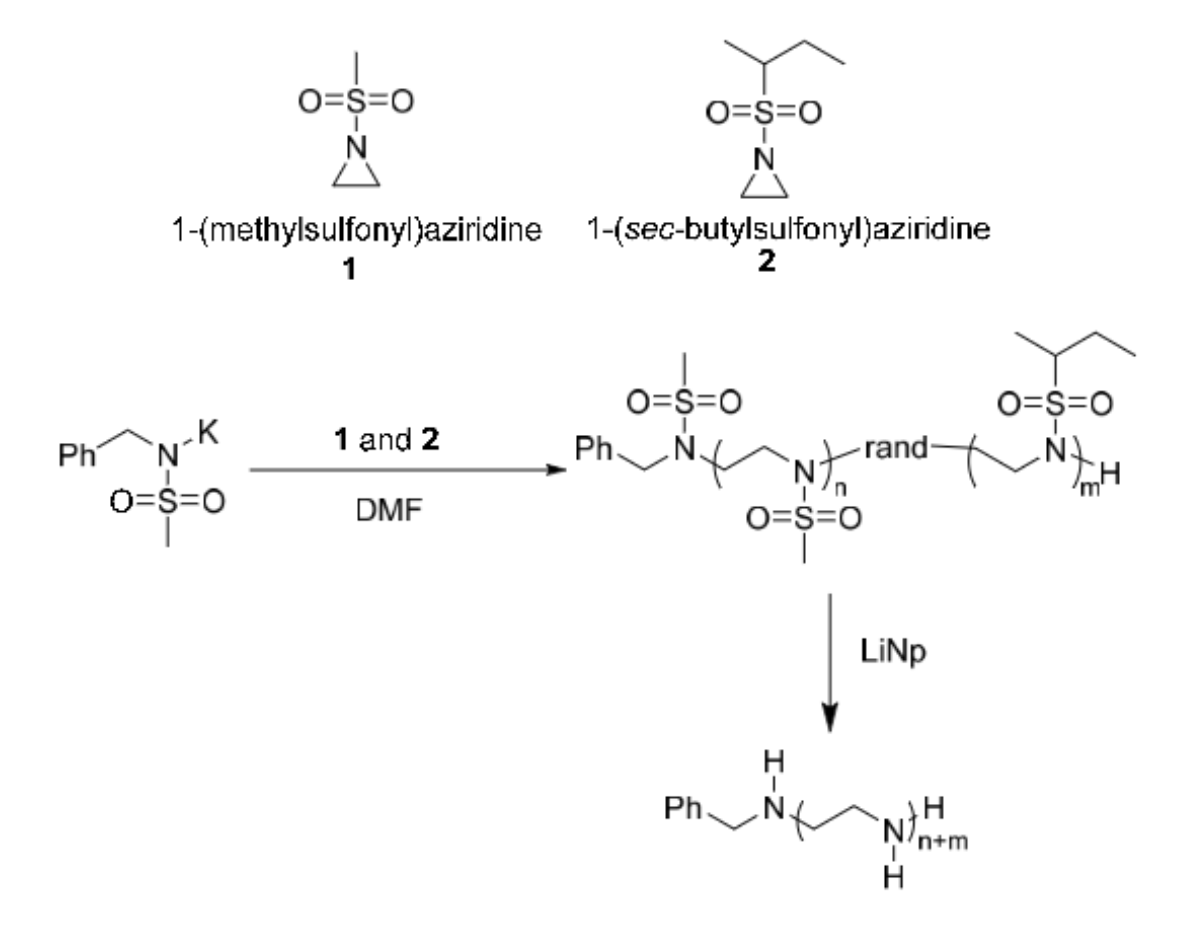The Problem:
Polyethyleneimine (PEI) is a unique polymer that has a wide range of commercial and research applications. It is most commonly formed by the cationic ring-opening polymerization (CROP) method, which creates a highly branched polymeric structure. The high degree of branching is the result of secondary amines along an existing PEI chain inducing the ring-opening of unreacted aziridine monomers. However, the CROP of aziridine to form branched PEI is difficult to control and reproduction between batches is problematic.
The Solution:
Researchers have produced a method for the production of the linear format polyethyleneimine (PEI). The method first polymerizes N-sulfonyl aziridines to form N-sulfonyl ethyleneimines, which are then converted into linear PEI. This allows for the creation of soluble living polymers and for the production of block co-polymers with PEI (which is currently not possible with non-linear PEI). The method additionally allows for the varying of molecular weight of the polymer.
 Living anionic ring-opening copolymerization of two different N-sulfonylaziridines to form linear PEI.
Living anionic ring-opening copolymerization of two different N-sulfonylaziridines to form linear PEI.
Benefits:
·Does not require 2-substituted sulfonylaziridines.
·Polymerization occurs at room temperature.
·Only requires a common solvent.
·Resulting polymers have improved solubility with more accessible amine groups.
·Allows for greater control and ability to be reproduced.
The University of Alabama Office for Innovation and Commercialization(OIC) is a non-profit corporation that is responsible for commercializing University of Alabama technologies and for supporting University research. At OIC, we seek parties that are interested in learning more about our technologies and commercialization opportunities, and we welcome any inquiries you may have.